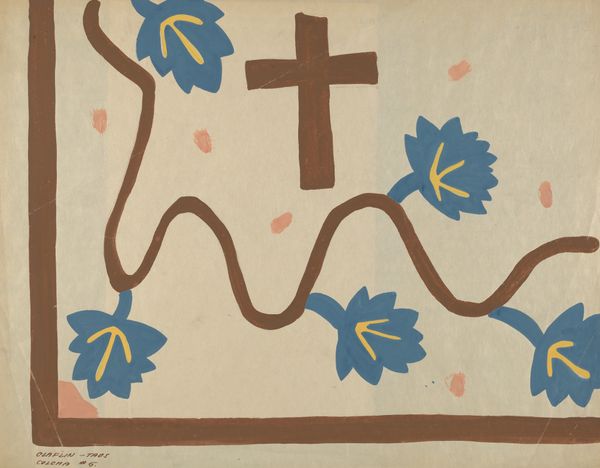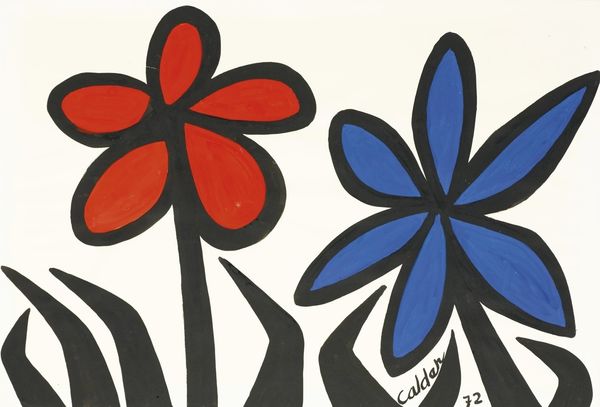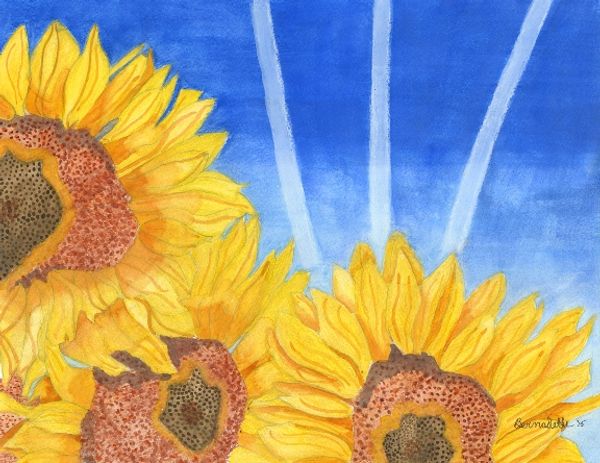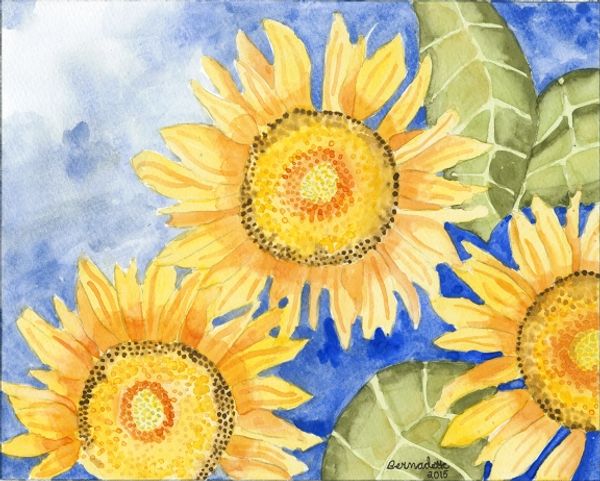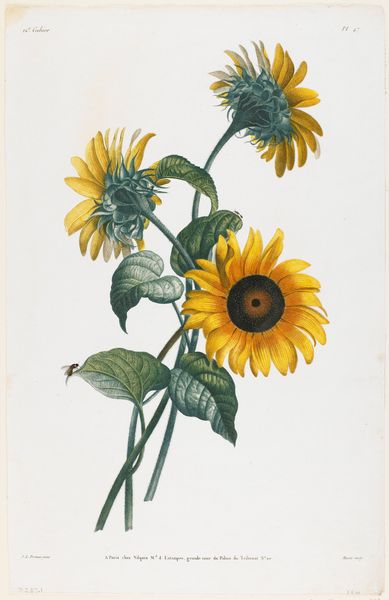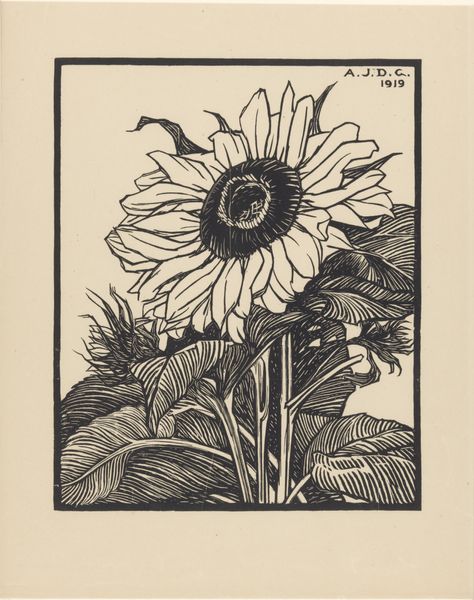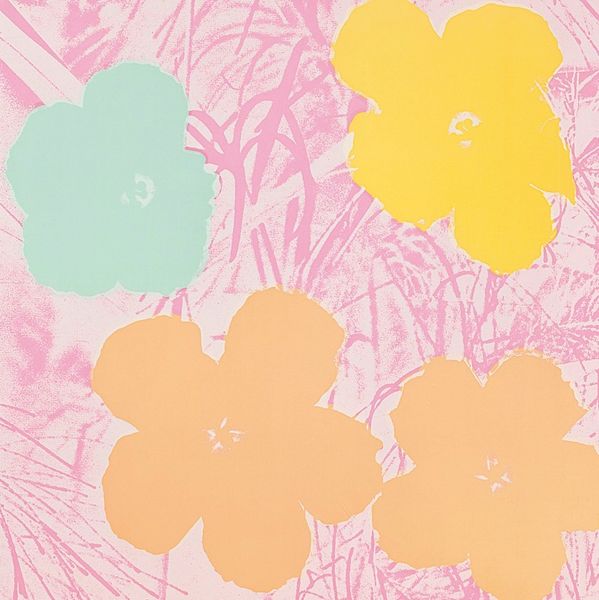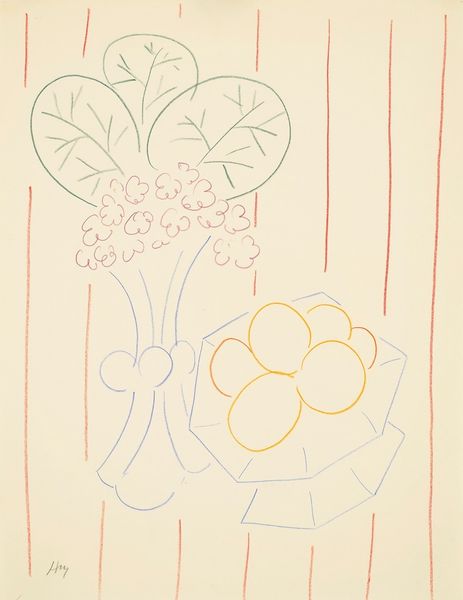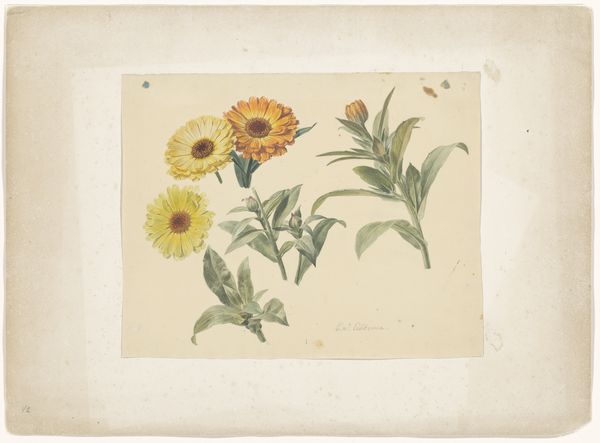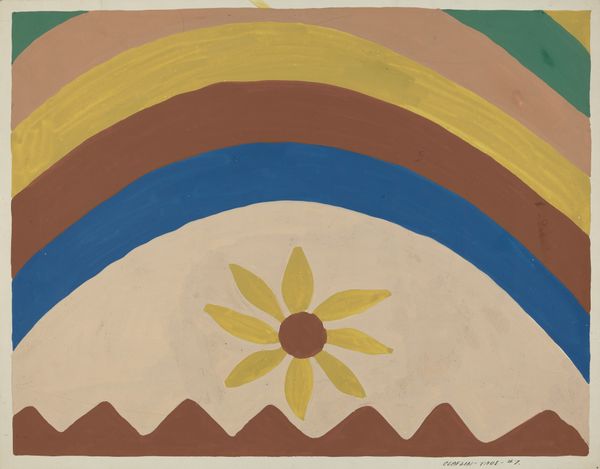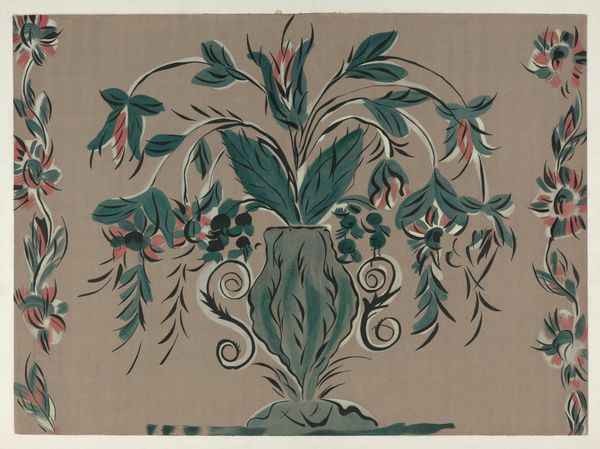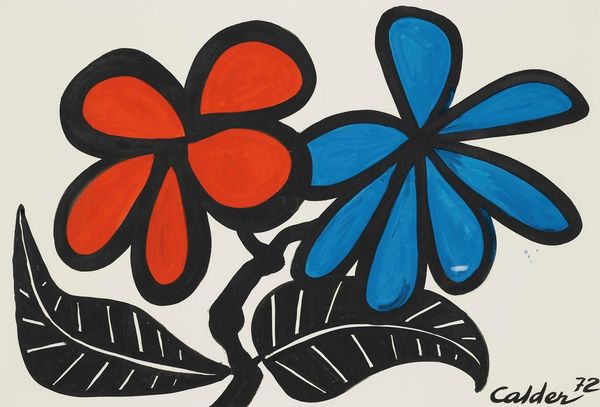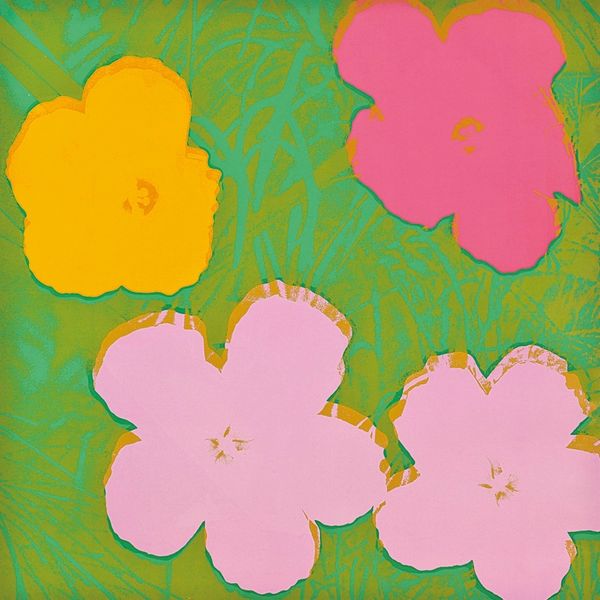
drawing, paper, watercolor
#
drawing
#
paper
#
watercolor
#
folk-art
#
abstraction
Dimensions: overall: 35.8 x 45.8 cm (14 1/8 x 18 1/16 in.)
Copyright: National Gallery of Art: CC0 1.0
Editor: We're looking at "Colcha," a watercolor and drawing on paper, created between 1935 and 1942 by Majel G. Claflin. It's so simple and bright, almost like a child's drawing. I'm struck by the naive quality and the folk-art feel. How do you interpret this work, especially considering its historical context? Curator: This piece is deceptively simple. It invites us to consider the power of folk art traditions, especially during a time of immense social and economic upheaval. Claflin, by engaging with the "Colcha," which references traditional Spanish Colonial embroidery, potentially connects to the era's search for identity amidst rapid modernization and cultural shifts. Think about what it meant to look back to the past for comfort and meaning. What is evoked by this return? Editor: It feels almost defiant, in a quiet way. Like reclaiming a sense of heritage. Do you see a connection to the WPA's focus on American art? Curator: Absolutely. During the Depression, the WPA supported artists in documenting and celebrating American traditions, but how do we unpack the socio-political nuances within this focus? Whose traditions were deemed "American" and how might that marginalize other cultural expressions? Perhaps Claflin challenges those definitions through this engagement with a "Colcha." Is she preserving, innovating, or questioning? Editor: I never considered those power dynamics inherent in the act of preservation itself. Thank you! Curator: It's in these dialogues that we understand the powerful narratives woven within seemingly simple works of art.
Comments
No comments
Be the first to comment and join the conversation on the ultimate creative platform.
